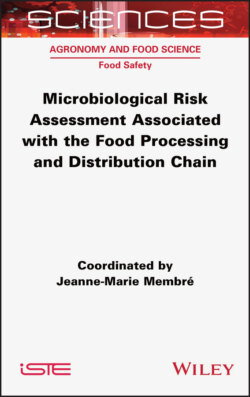Читать книгу Microbiological Risk Assessment Associated with the Food Processing and Distribution Chain - Jeanne-Marie Membre - Страница 12
Introduction
ОглавлениеJeanne-Marie MEMBRÉ
SECALIM, INRAE, Oniris, Nantes, France
Food safety is the guarantee that food is harmless, in other words that its consumption will have no adverse consequences for health. As we are reminded by the World Health Organization (WHO), food safety encompasses all the measures taken to provide food that is as safe as possible, and hence the policies and measures applied must relate to the entire food chain, from production to consumption.
Ensuring a safe food supply poses major food safety challenges for public authorities (FAO and WHO 2006). Changing global patterns of food production, international trade, the emergence of new technologies, public expectations in terms of health protection and many other factors have created an increasingly demanding environment in which food safety must operate (Figure I.1).
There are a number of food-associated risks that can cause harm to human health. Chemicals used in agriculture, environmental pollutants and pathogenic bacteria are all examples of hazards that can ultimately end up on the consumer’s plate and in some cases harm their health.
The first estimates of the global and regional burden of foodborne diseases, published by the WHO in December 2015 (WHO 2015), show that this burden is significant all over the world. Every year around the world, 1 in 10 people fall ill from eating contaminated food and 420,000 die from it, nearly a third of whom are children under the age of 5. The hazards responsible for these foodborne illnesses include bacteria, viruses, parasites, toxins and chemicals. More specifically, diarrheal diseases are responsible for 550 million cases and 230,000 deaths per year. Children are particularly susceptible, with 220 million cases and 96,000 deaths per year. Diarrhea is often caused by eating raw or undercooked meat, eggs, fresh produce and/or dairy produce.
Figure I.1. Factors influencing the evolution of food safety. From the FAO and WHO (2006)
In Europe, more than 23 million people fall ill each year after consuming contaminated food, resulting in 5,000 deaths (WHO 2017). Still in Europe, the most common causes of foodborne diseases are noroviruses, followed by Campylobacter spp. Non-typhoid Salmonella spp. are responsible for the majority of deaths. We will review these three microbiological hazards below.
